Hey there, travel aficionados! 👋
Today, I'd like to introduce you to the captivating marine world of the Crete Aquarium, with a strong emphasis on the significance of preserving aquatic ecosystems.
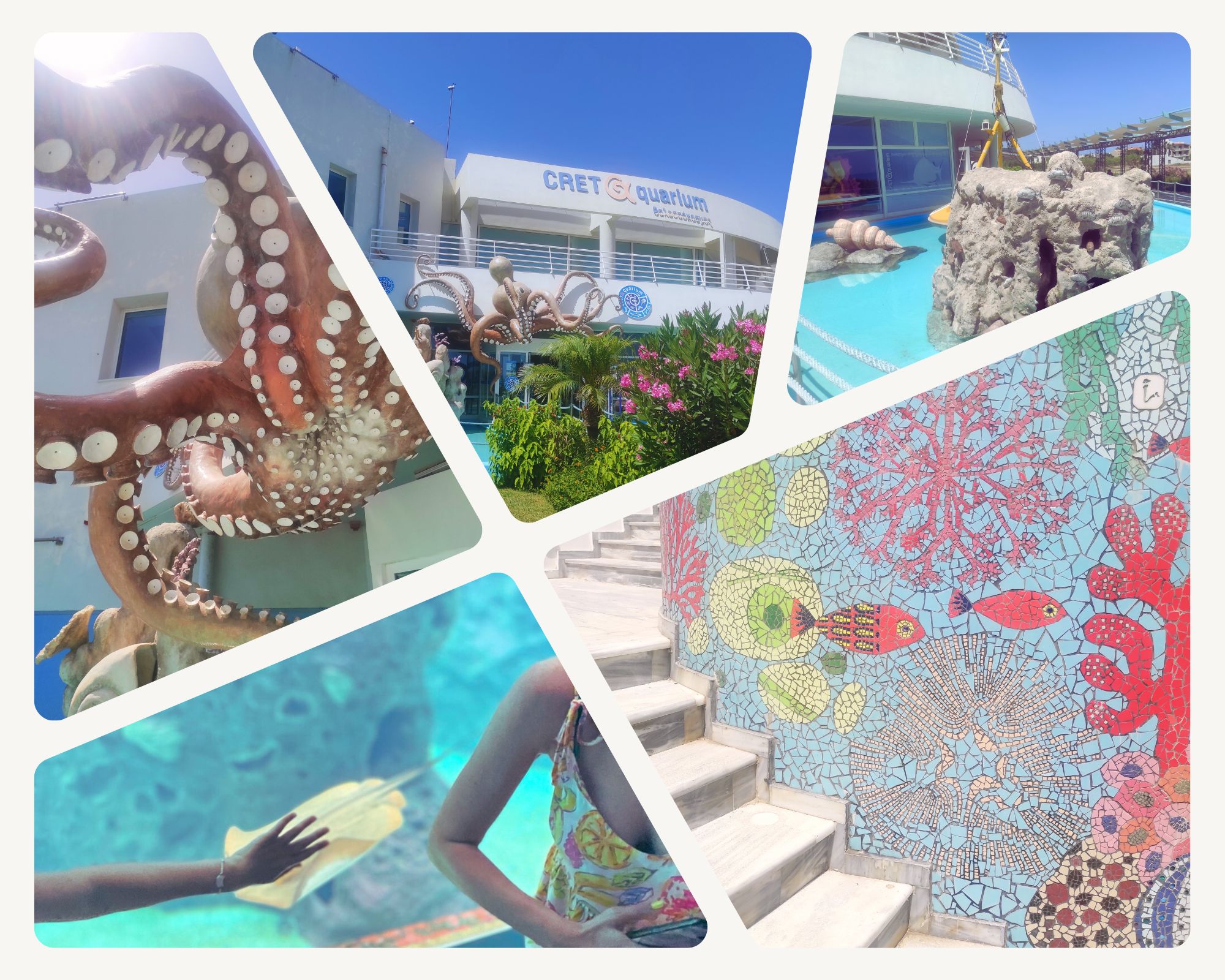
Situated 15 kilometers east from the capital city of Heraklion, the Crete Aquarium spans an impressive 5000 square meters. This multifaceted structure functions as both a research hub, housing the Institute of Marine Biology & Genetics and the Institute of Oceanography, and a captivating, expansive aquarium. With 60 tanks showcasing 2500 organisms from 200 Mediterranean marine species, it offers a window into the intriguing underwater landscapes of the Cretan sea. Boasting over 100 viewing points, the aquarium promises an immersive experience.
While you have the option to secure a tour through various online platforms, we chose the path of independence, arriving in rented cars. Our journey led us to the doorstep of the aquarium, where we easily found parking in the spacious lot.
As we approached, our eyes were drawn to a large, purple octopus perched above the entrance doors, extending a whimsical welcome. Ticket acquisition occurs within the lobby. Initially, it appeared that a sizable crowd might lead to lengthy waiting times. However, this initial impression was swiftly dispelled. The general entrance fee is 12 euros per adult, 6 euros for children aged 5 to 17, while entry is free for the youngest visitors. Once we acquired our tickets, we stepped into the enchanting world of the Mediterranean marine environment.

As we were informed, the species are nurtured within their distinct ecosystems, which explains the division of the entire aquarium journey into segments.
Information about the species residing in each aquarium was provided beside them, in 9 languages, and is also available in audio format. This interactive approach allows visitors to deeply understand and appreciate the richness of the Mediterranean marine ecosystem. Additionally, cameras placed beside specific tanks offer scientists the opportunity to observe the life cycles and behaviors of the resident animals.
Being welcomed by these little ones at the path's outset, we then dove into the depths.
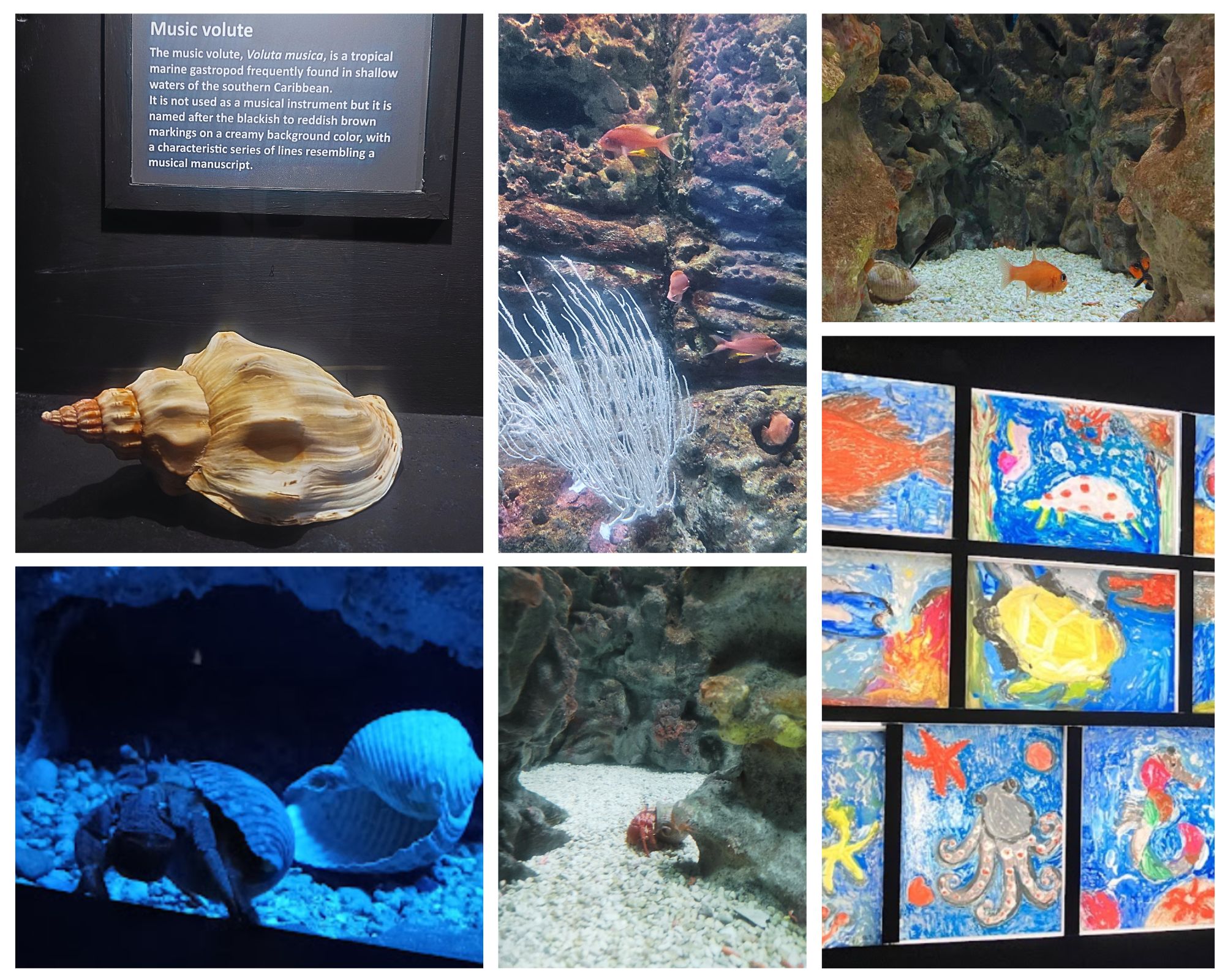
In this section, we encountered creatures dwelling in the expansive, dim depths under conditions of minimal light. Each aquarium felt like a new chapter in a book, where every step revealed a fresh, captivating scene showcasing the marvels of marine life.
Now, let me introduce you with to this sizable character, the Dusky Grouper. As we know, looks can be misleading. Although it can grow to about 1.5 meters in length, this creature is surprisingly a very timid predator. And here's an interesting tidbit: mature male dusky groupers were initially born as females.

The smiling face from the photo belongs to another magnificent resident: the Wreckfish. These fish are renowned for their impressive dimensions, with mature individuals reaching lengths of up to 2 meters (6.6 feet) and weighing several hundred pounds. Their substantial size and exceptional meat quality have made them a sought-after catch for commercial fisheries. However, this popularity has led to overfishing in certain areas, raising concerns about their population levels and sustainability.
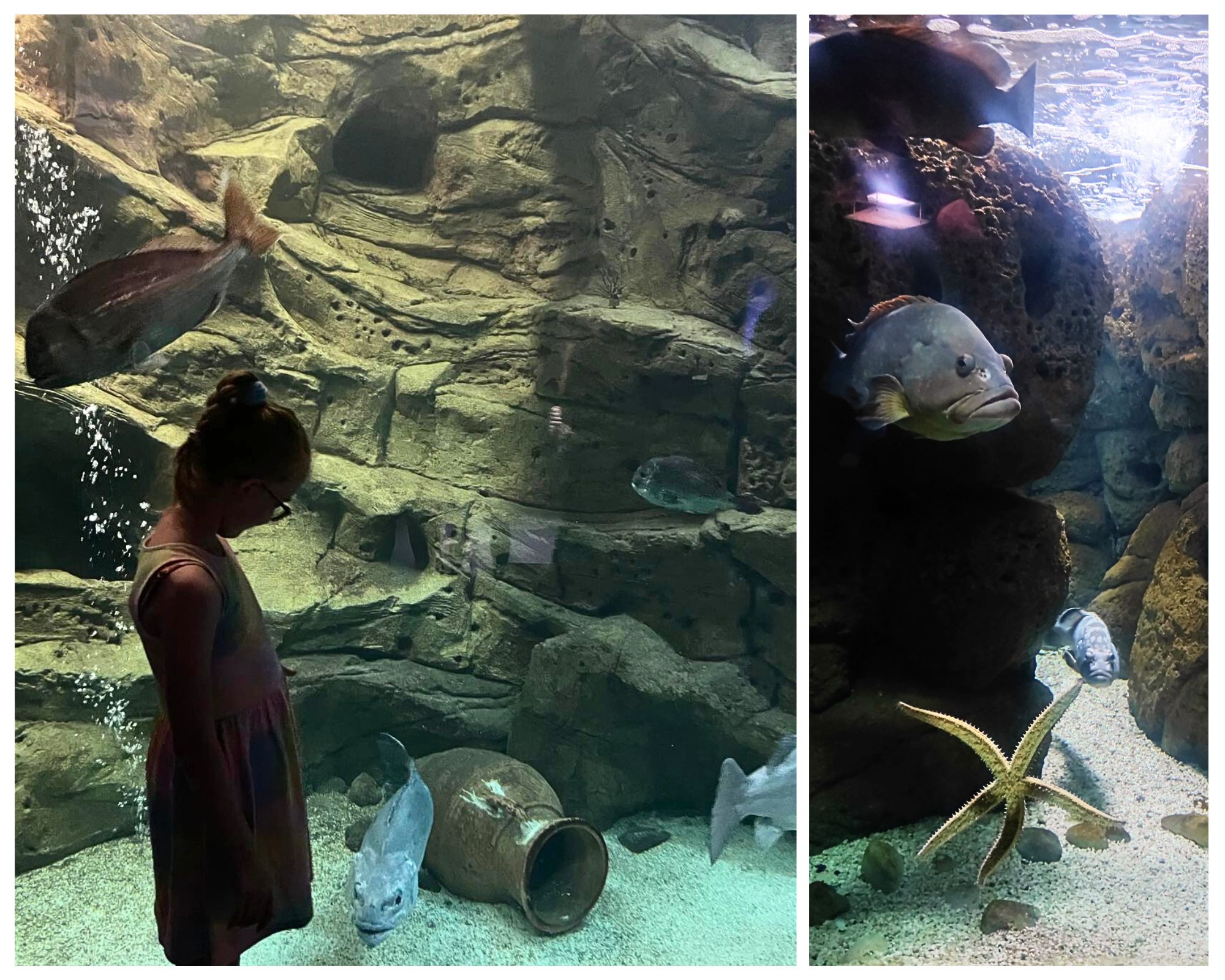
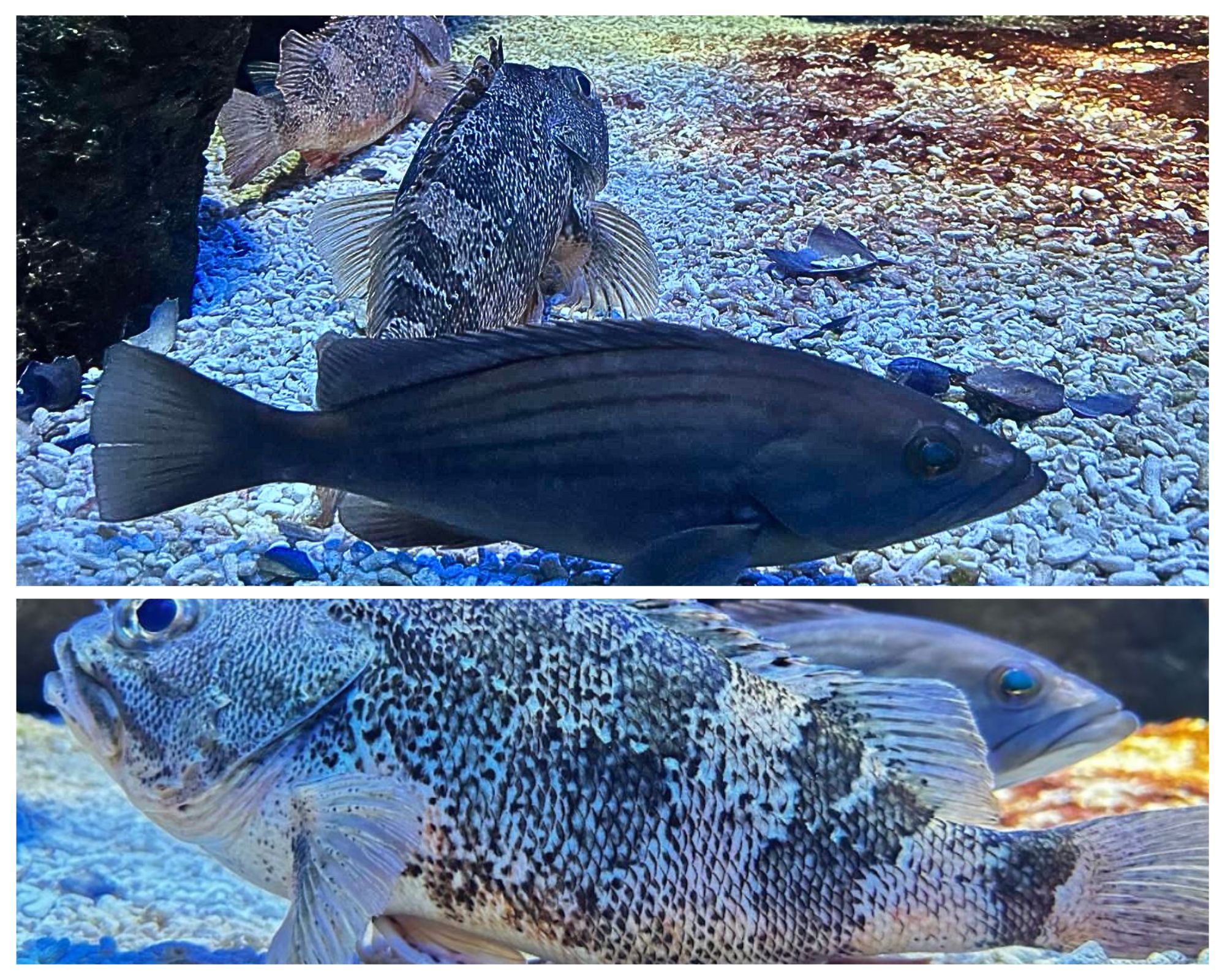
Transitioning to the next segment, we were greeted by substantial tanks with capacities of 400 and 600 m3, where darkness gradually gives way to light, drawing inspiration from the seabed landscapes of Matala (I wrote about Matala my previous post) and Vai. In this section, we found ourselves in a "jaw-dropping" face-off with sharks, cuttlefish, rays, turtles and seabreams. They, along with their underwater crew, were putting on a mesmerizing aquatic dance show.

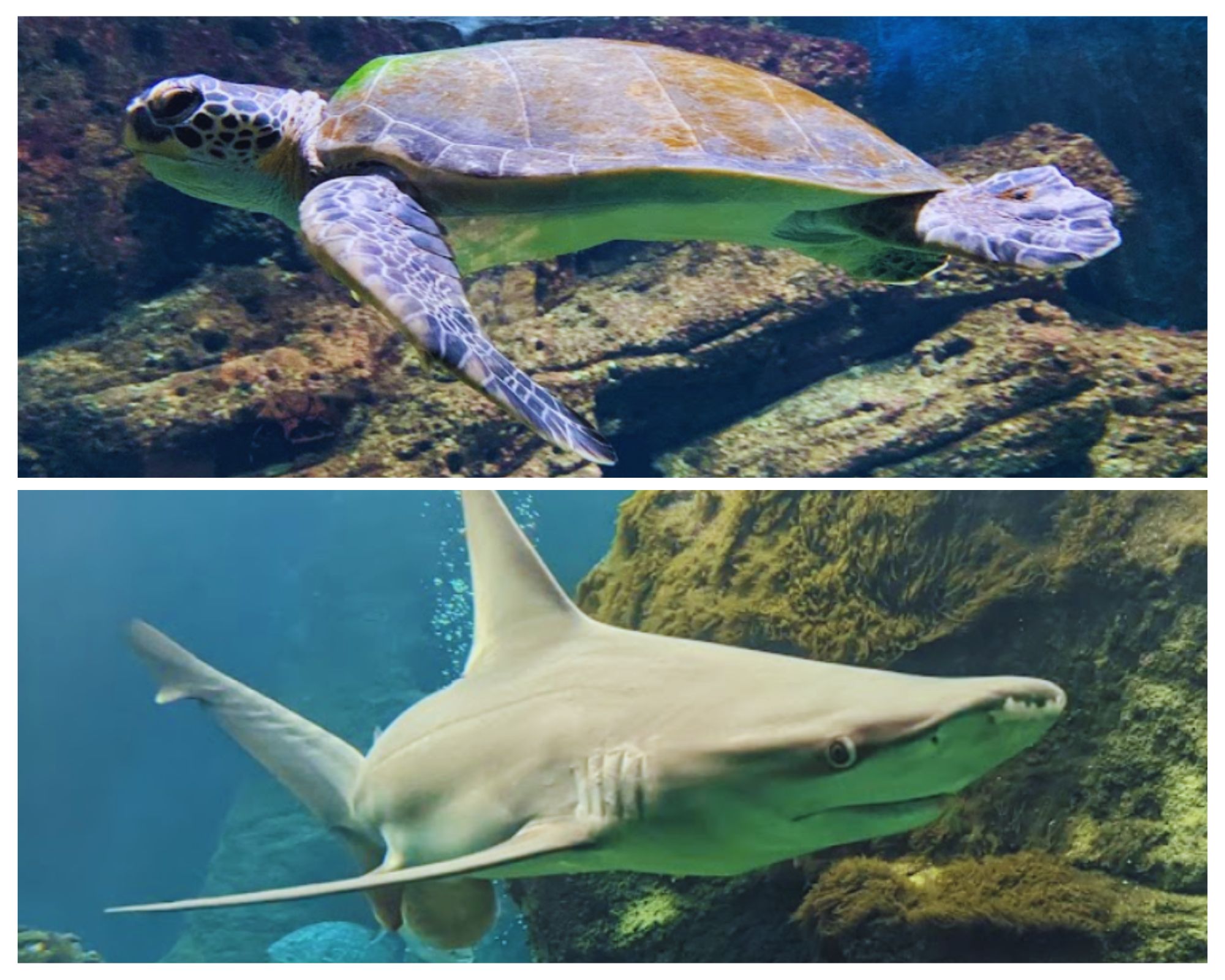
This part seemed to be a magnet for junior explorers. They couldn't resist pressing their little digits against the glass, probably wishing they could high-five the sharks or give a thumbs-up to the rays.
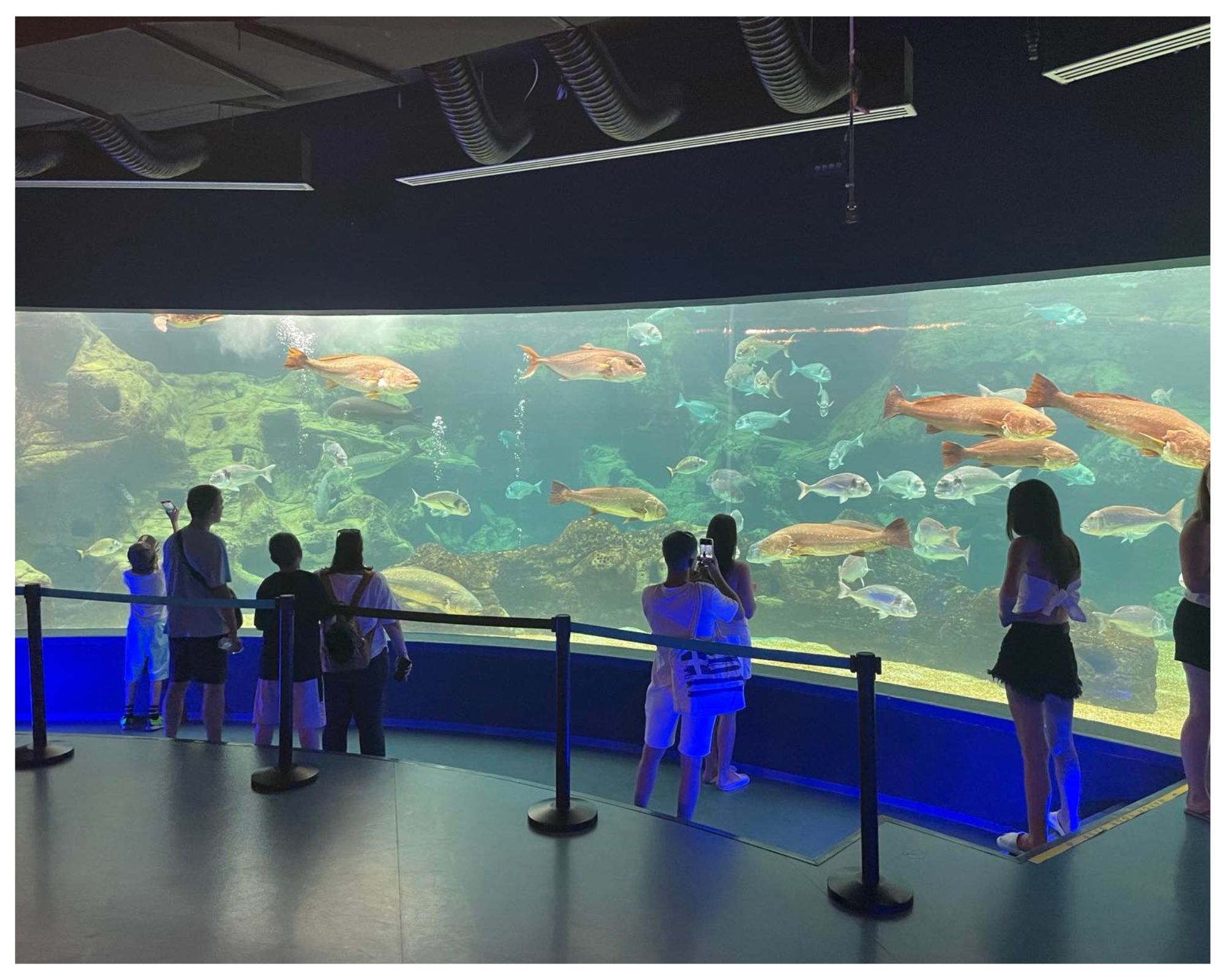
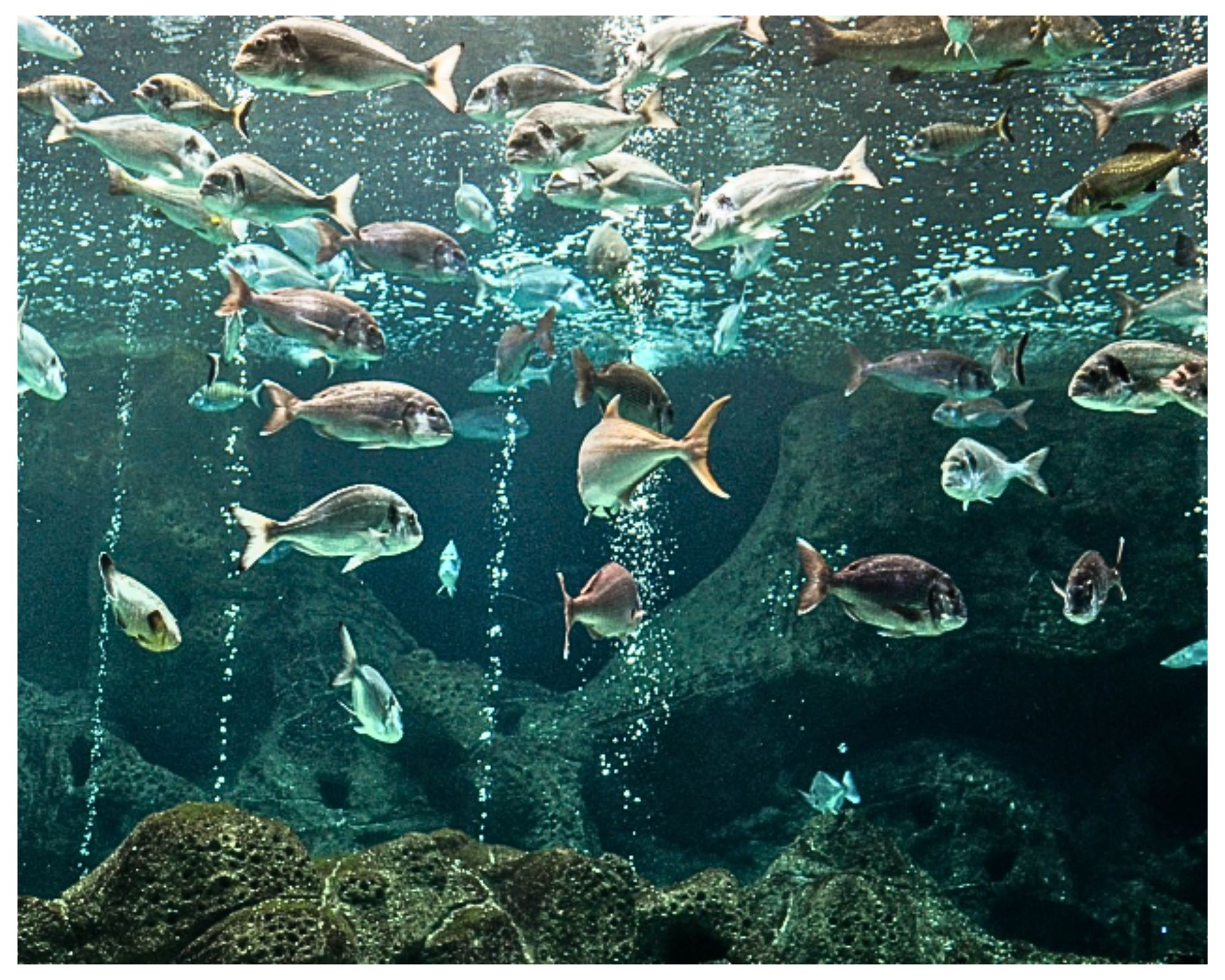
Right by the tank, a nifty gadget lets you play dentist by selecting a species and hitting a button on the screen. Voila! You get to check out the pearly whites and dental arrangements of these precious marine pals 😁!
After immortalizing this meeting with a photograph, we continued forward, hoping that this would be the closest we'd ever come to sharks and their teeth in our lives 🤞 😃!

After passing through this lobby, the tour progressed to explore the coastal biotopes, venturing into some of the world's most productive ecosystems.
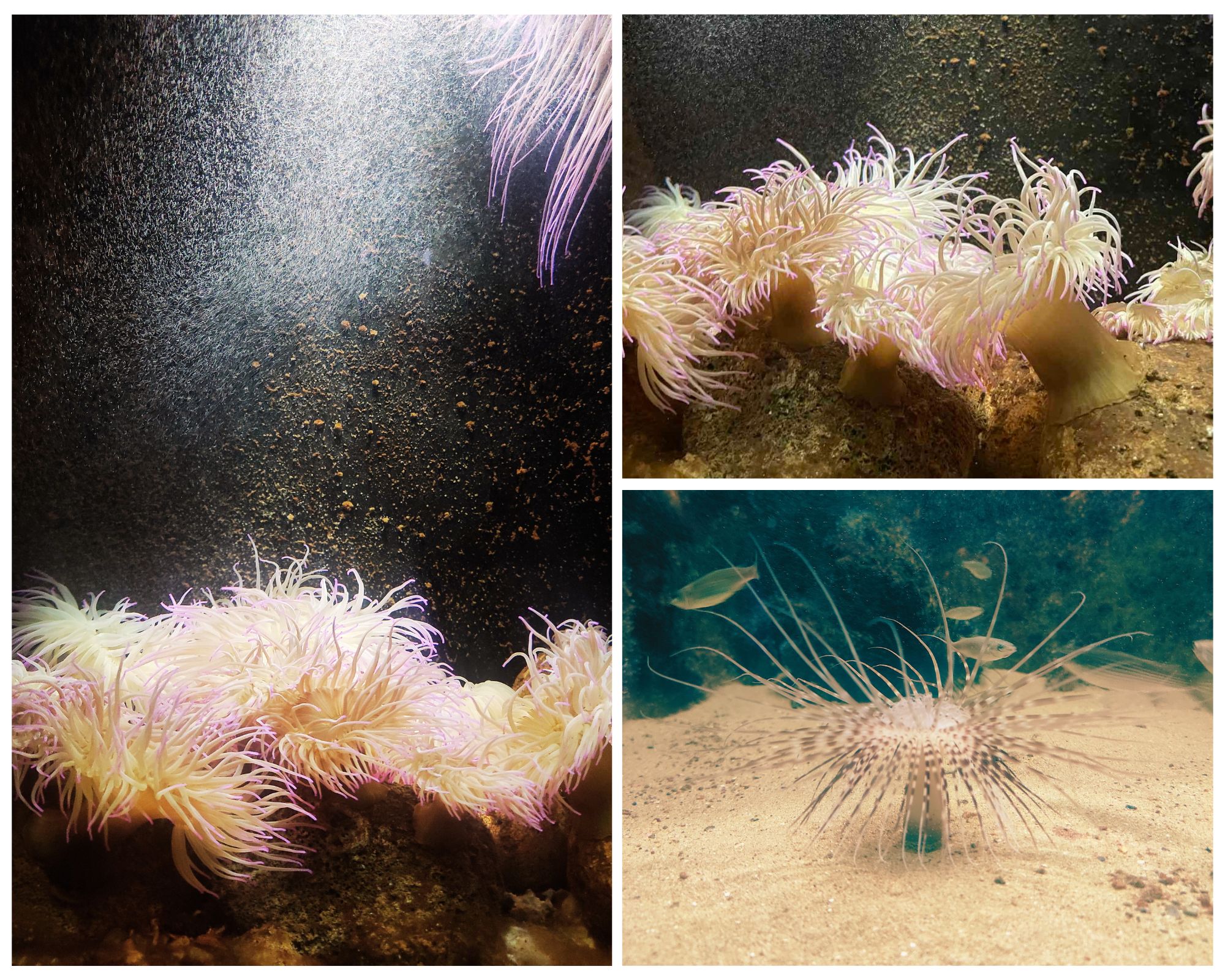
The left object in the above photo is an Anemone. Is it a plant or an animal? Its appearance might mislead you, but it is, in fact, a sea animal. It is so beautiful!
In the next photo, you can see a Dwarf seahorse, the Freckled Porcupinefish, as well as a fish with wings known as the Tub Gurnard.
Did you know that seahorse males are the ones who become pregnant? The male seahorses carry and nurture the developing embryos in a specialized pouch. Quite a role reversal in the underwater world!
The Long-Spine Porcupinefish or Freckled Porcupinefish (the photomodel in the upper right corner) possesses the remarkable ability to inflate its body akin to a balloon. Unfortunately, it appeared that our presence didn't inspire a demonstration of this inflation prowess. Jinx😜 !

And not to offend the sea stars and lobsters... 😊
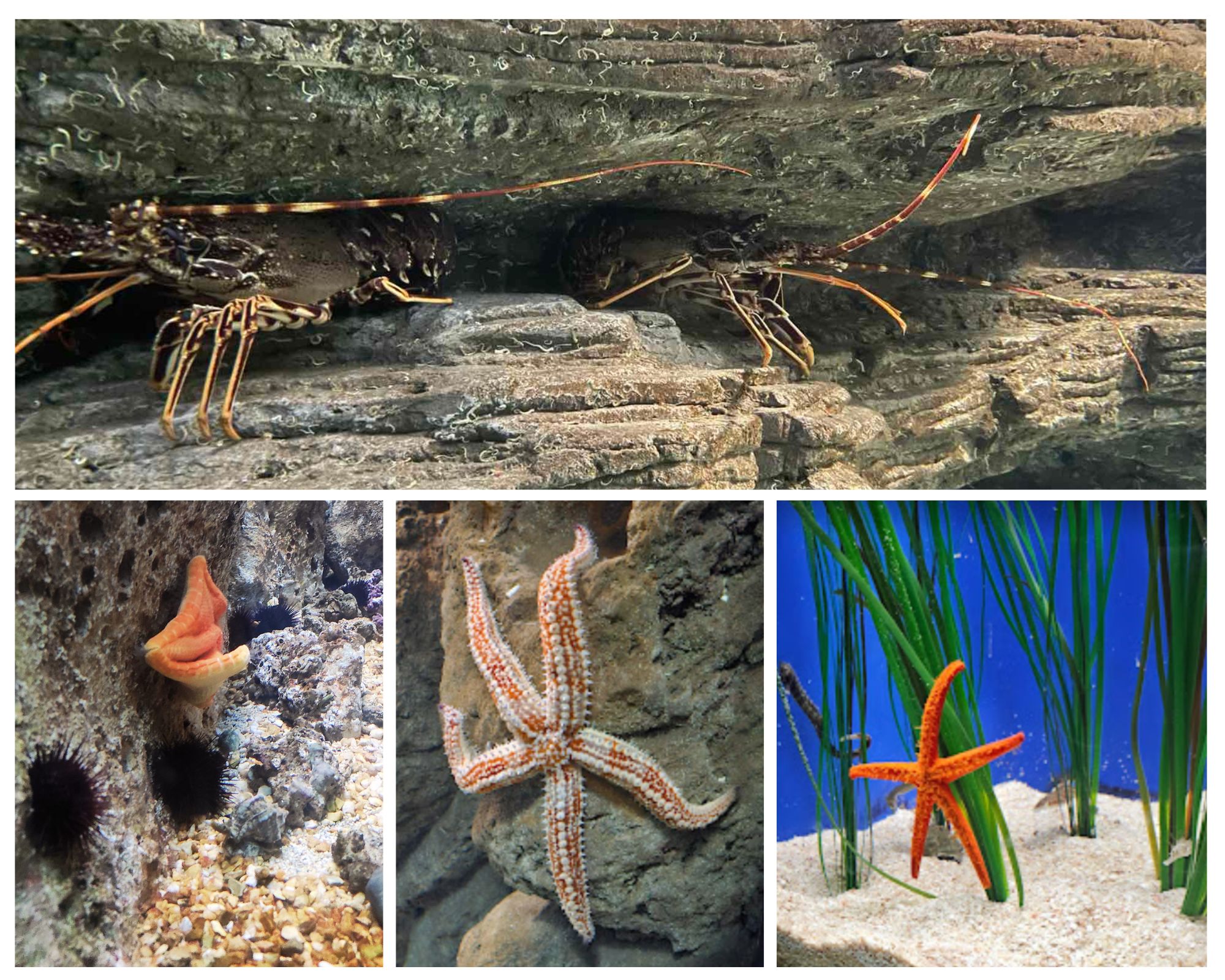
Further on, our path led us to shallow open tanks, where we could closely observe several marine creatures.
We marveled at the leisurely drifting jellyfish, their tranquil movements evoking an ambiance of peace and serenity. Applause for the impressive performance, but we didn't allow ourselves to be deceived 😎!
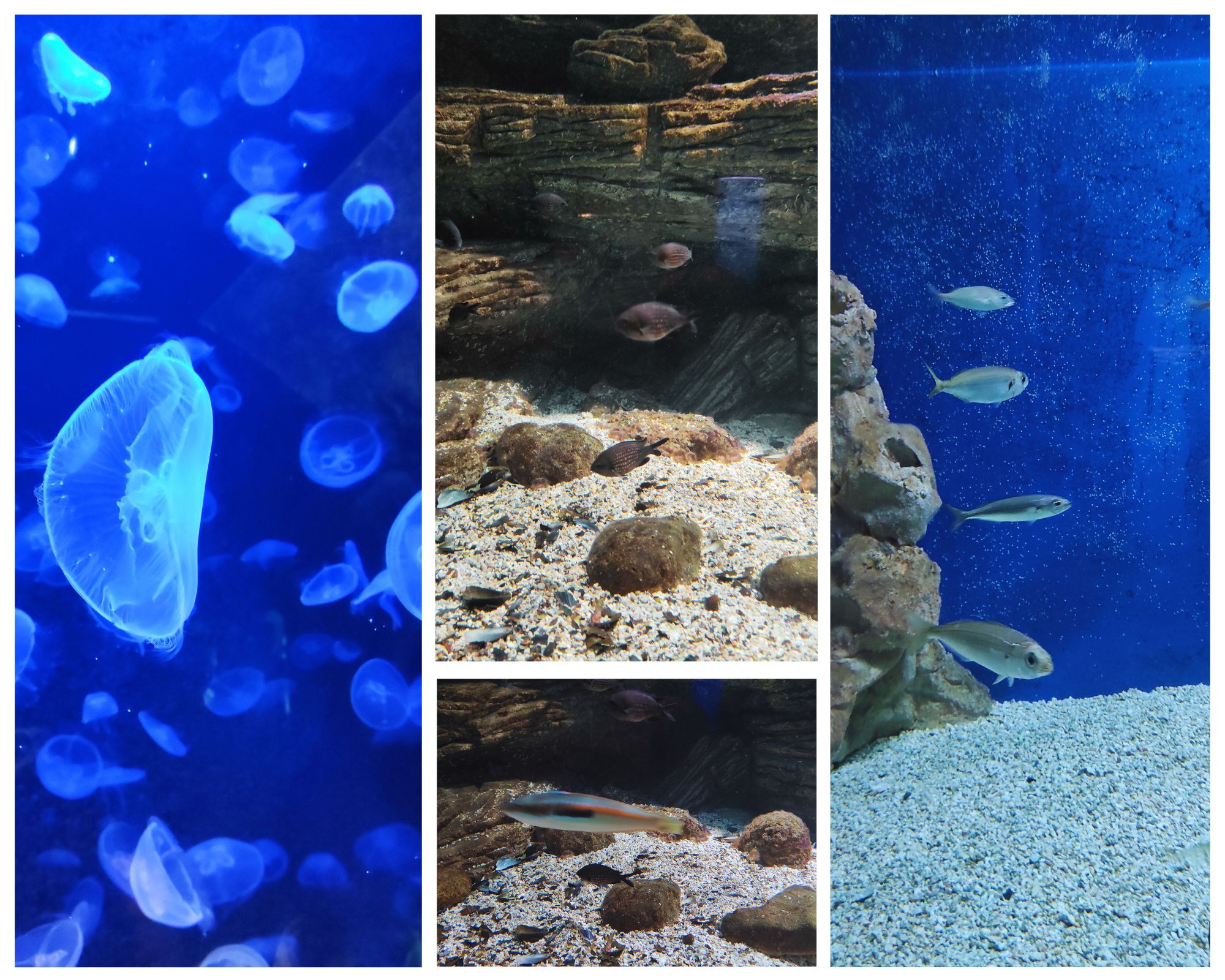
The final part of the Aquarium celebrated tropical species known as "lessepsian migrants", a result of the Suez Canal's construction, connecting the Mediterranean and the Red Sea. This connection allowed tropical species to migrate through currents, finding a home in the Mediterranean. Some of these migrants chose to stay permanently. They're called "lessepsian" in honor of Ferdinand de Lesseps, the canal's developer.
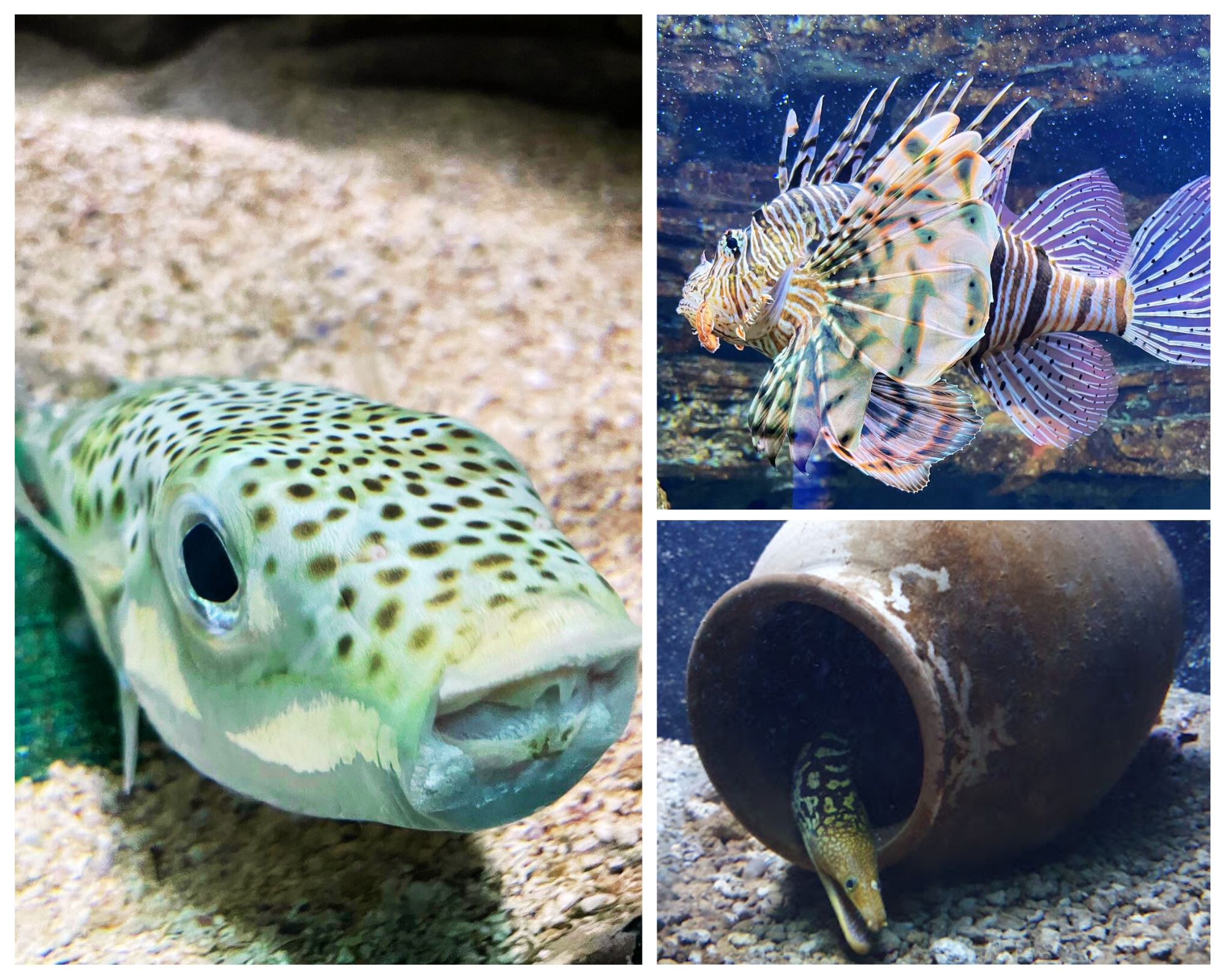
For instance, this green, spotted creature with an endearing smile is the Lagocephalus sceleratus, more commonly known as the silver-cheeked toadfish. It's migrated from the tropical waters of the Indian and Pacific oceans and now thrives in the eastern Mediterranean Sea.
And of course, we spotted the “Clown fish“ or our beloved "Nemo" and his friend "Dory" with their fancy colors, accompanied by their vibrant neighbors.
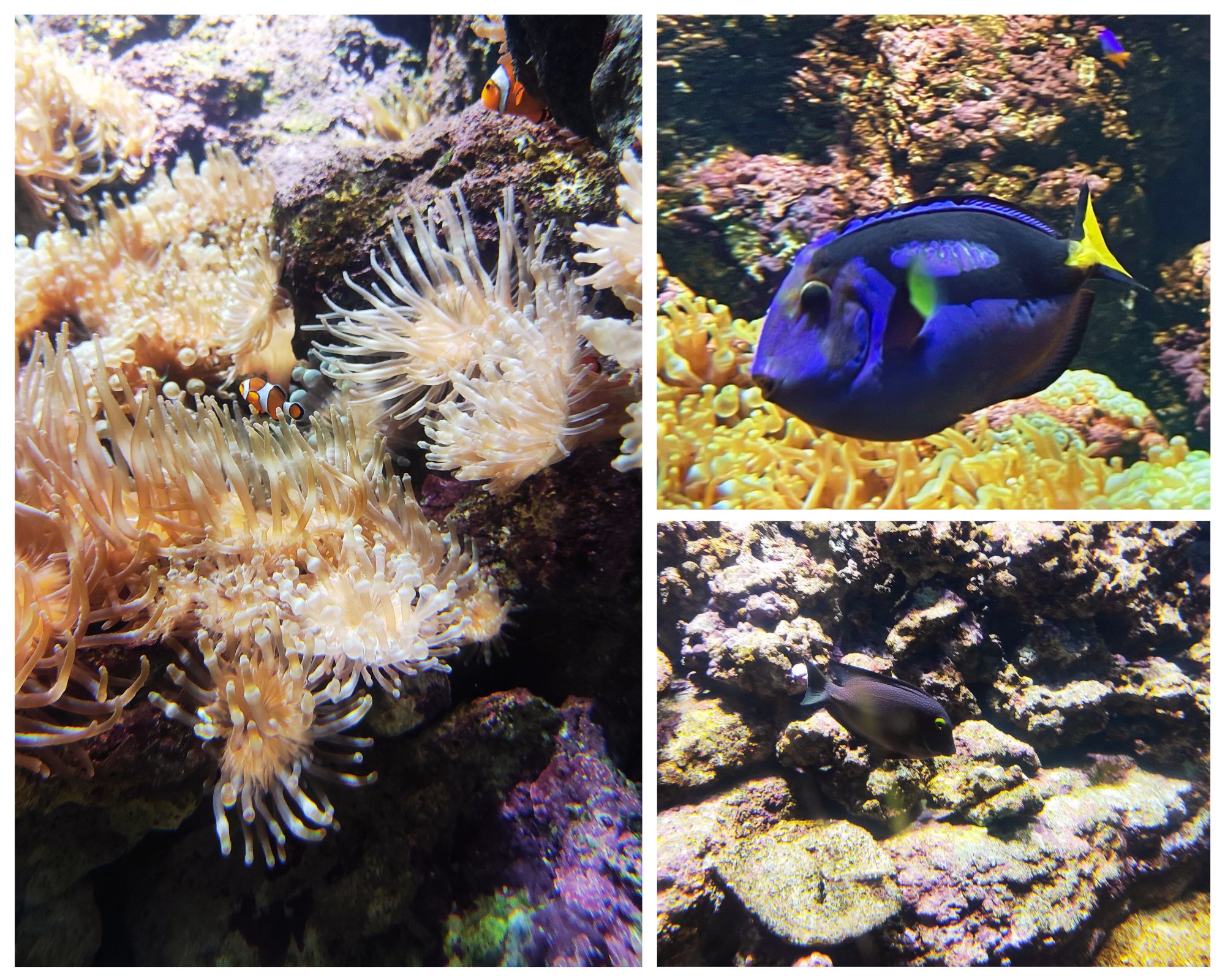
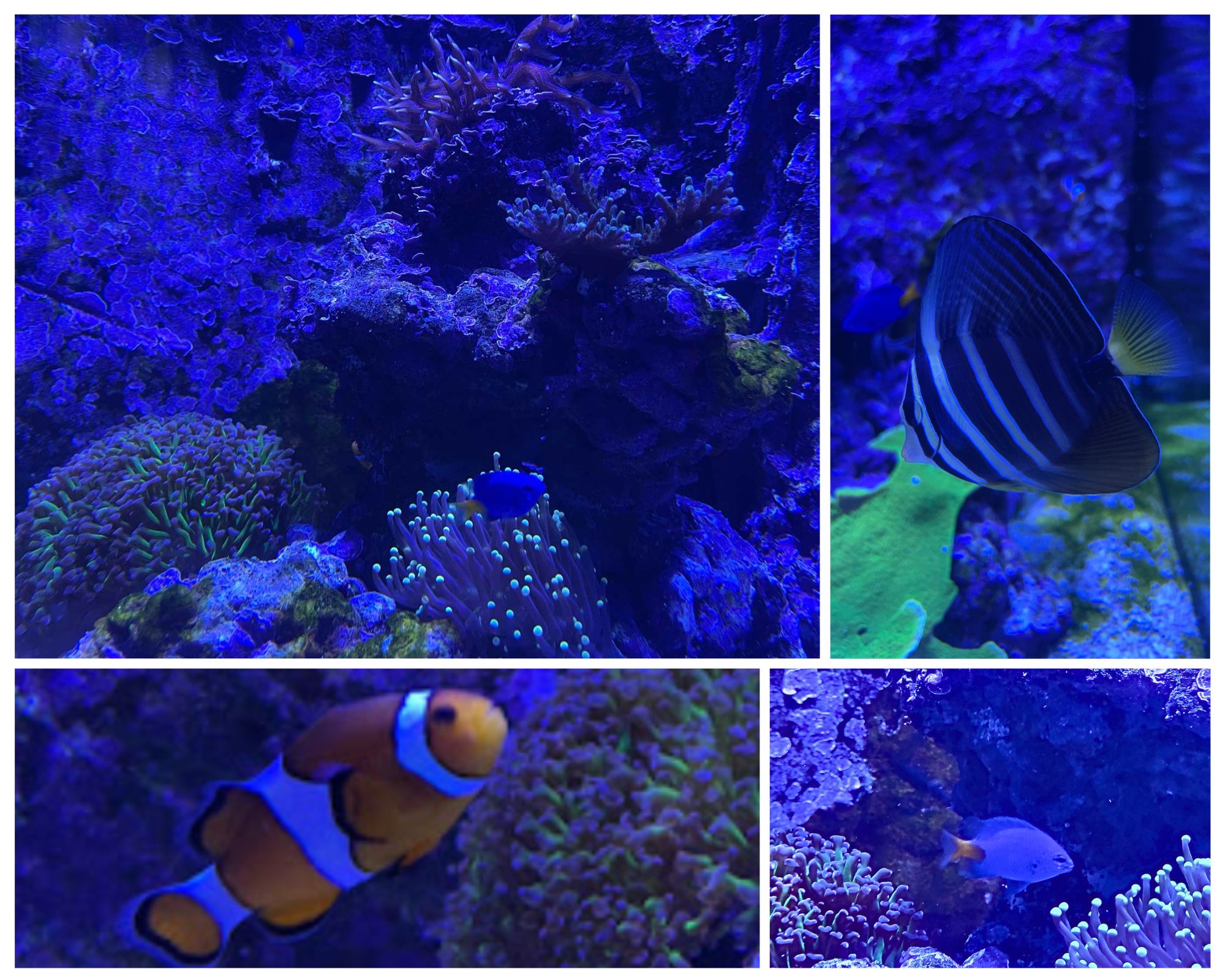
We also noticed some quirky characters. I can't quite recall the name of this particular one, but we nicknamed it "Pinocchio". I believe there's no need to explain who this refers to and why! 😄
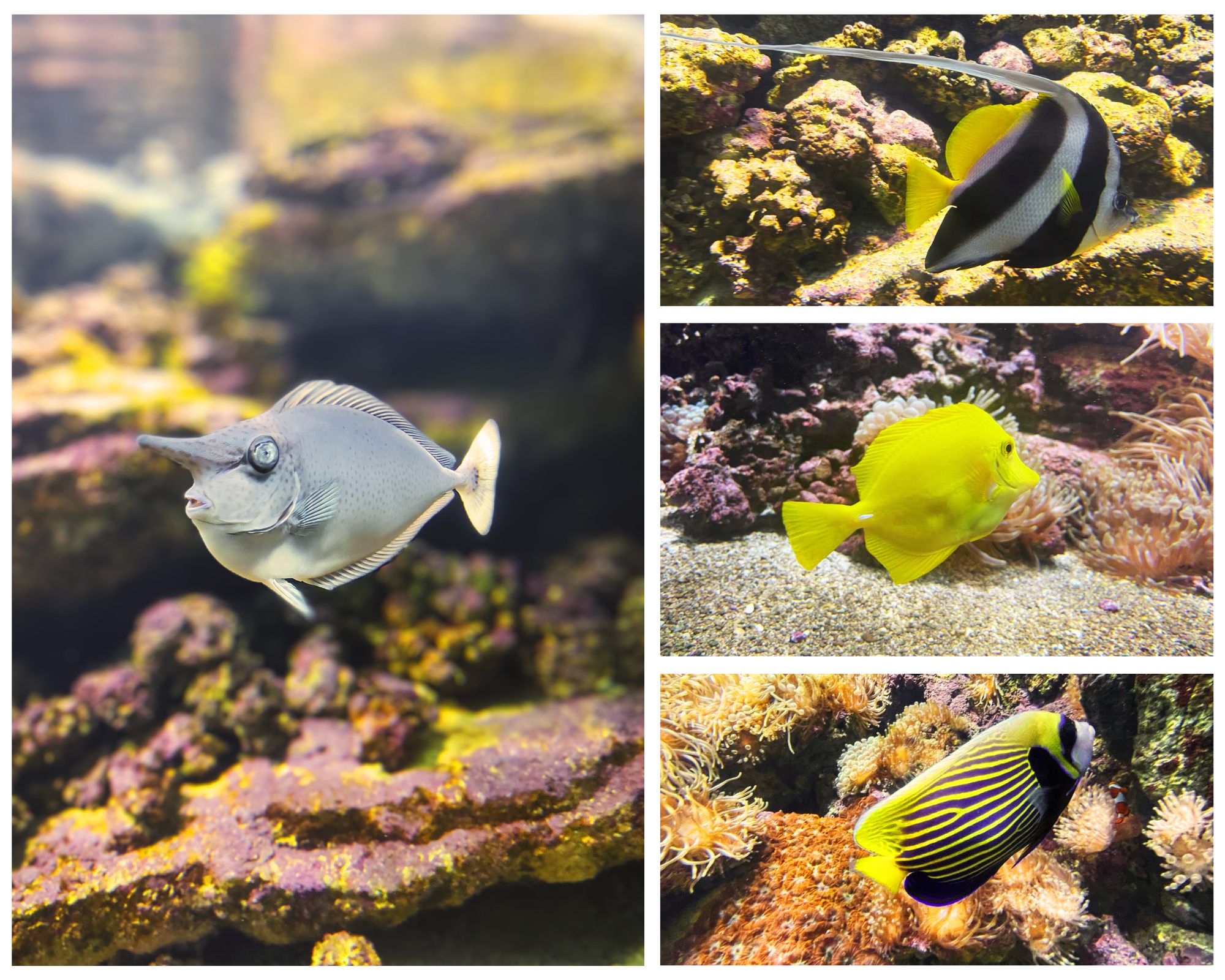
And then, as we neared the exit, a stark reality awaited us. There, before our eyes, lay exposed waste in the form of plastic bottles, diapers, and cigarette boxes, within one of the aquariums. Beside it, a display highlighted the years required for its decomposition.
This visual reminder of the impact of human actions on the marine environment stranded me on the shore. 😧
It underlined the crucial connection between our choices and the well-being of the ocean.
We all share the responsibility for the outcome and must collectively work towards a healthier marine ecosystem! Otherwise, we will bear full responsibility for the for bringing an end to this vibrant marine celebration.

Our journey highlighted that marine life is far more than just beauty; these remarkable creatures play an essential role in maintaining the delicate equilibrium of the ocean ecosystem. It began with fascination and wonder, and concluded with a call to action— an invitation to appreciate and conserve the oceans that sustain us. It motivated us to step up and extend a helping hand to ensure their survival and the health of our oceans.
I hope that sharing our experience encourages others to explore this incredible world, learn from it and join us in safeguarding its future. 👊
Thank you all! 🥰
Congratulations @hildaroggina! You have completed the following achievement on the Hive blockchain And have been rewarded with New badge(s)
Your next target is to reach 100 upvotes.
You can view your badges on your board and compare yourself to others in the Ranking
If you no longer want to receive notifications, reply to this comment with the word
STOPTo support your work, I also upvoted your post!
Check out our last posts:
Incredible place, incredible photos, incredible post!🥳🐟 thanks for share, all the species you mentioned are amazing😁